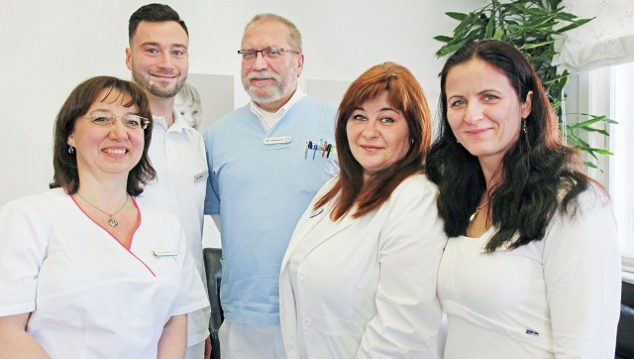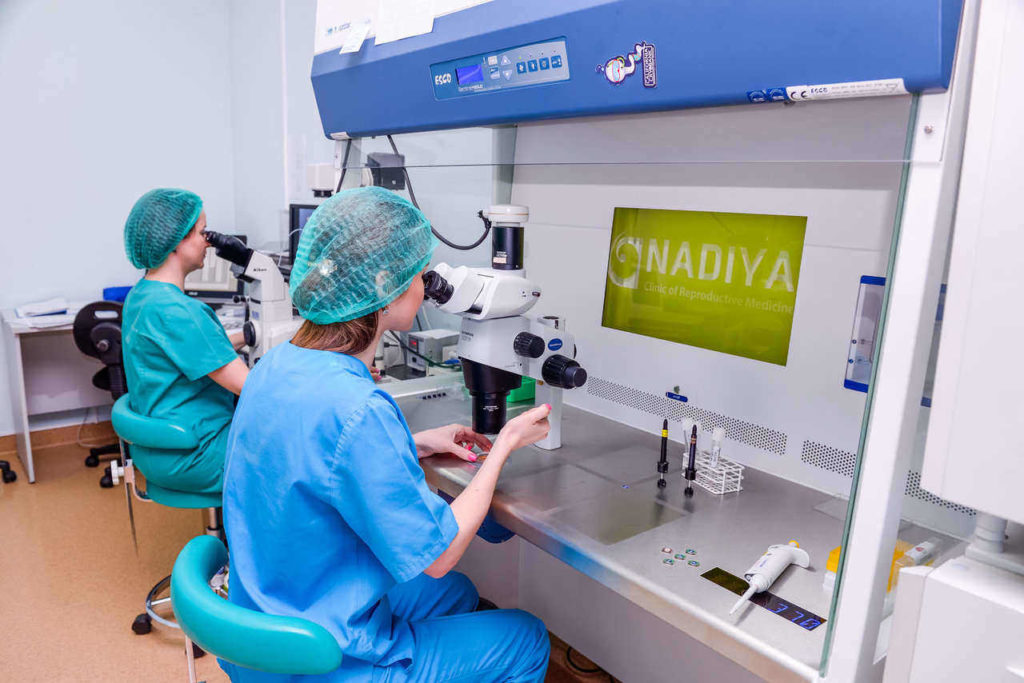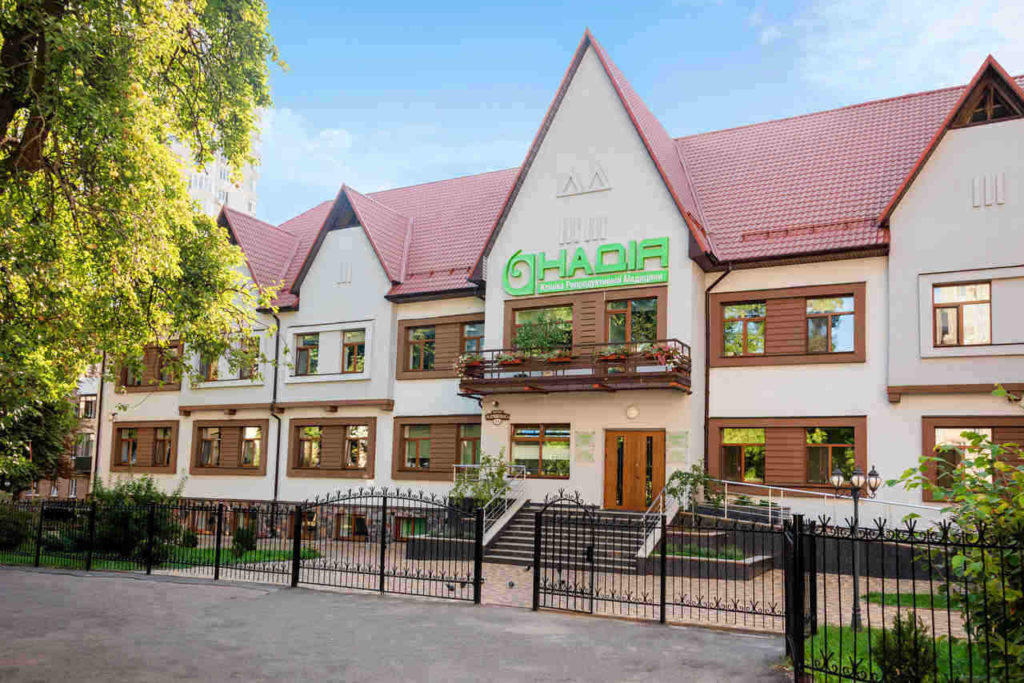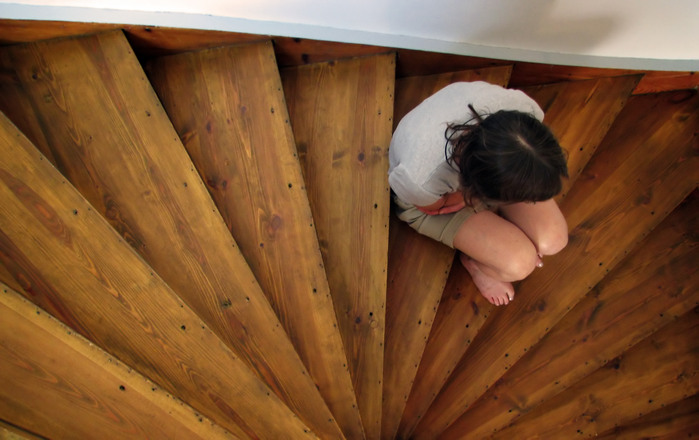Three-parent baby – the beginning
Let’s start with the early onset of IVF treatment. IVF was indeed a breakthrough infertility treatment and although the first IVF baby was born 1978, not all medical cases were a success. Dr. Valery Zukin from Nadiya Clinic noticed that one of his patient’s embryos ceased to develop on day 2 after the fertilization. The cause of embryo arrest was not known at that time. Eventually, the patient succeeded thanks to IVF with donor eggs – she had two beautiful baby girls. However, using donor eggs was a huge psychological blow for her and she regretted that she could not have babies genetically related to her.
Now we know that embryo arrest or neonatal baby loss can be caused by defects in the DNA; the variety of DNA located in the cell’s nucleus that also determines your eye colour, ethnic features, and susceptibility to certain diseases. The human nucleus contains 25,000 genes of the father and mother and the egg’s cytoplasm contains only 37 genes. If the mother’s mitochondria which are part of the mother’s cytoplasm carry a defect, the woman may give birth to a baby with a genetic disease, often fatal. The scientists thought “What if we could take out the parents’ nucleus and place it in a donor egg from which the nucleus was removed before?” The new embryo would then contain the pronuclear DNA of the intended parents and the healthy mitochondria from an egg donor. Such an embryo can be transferred back into the recipient patient and can continue to develop free from inherited mitochondrial disease.
In 2003 Dr. John Zhang made the first attempt at transferring the pronucleus but without any success. Still, he marked a beginning of a new era in IVF. Around this time FDA (the American Food and Drug Administration) banned the procedure in the USA and all the studies and experiments all over the world came to a halt.
Years passed and in 2015 the British parliament decided to legalize the procedure in the United Kingdom. What pushed the British politicians to make such a decision? Mitochondrial diseases and the case of Sharon Bernardi. The woman who lost seven children to a rare genetic disorder. In Sharon’s case, the problem turned out to be Leigh’s disease, a disease that affects the central nervous system, and which was lurking the mother’s mitochondria. These seven painful losses gave her the willpower and strength to restlessly seek answers and to support medical research that would allow defective genetic material to be replaced by DNA from a healthy donor. She wrote a letter to the British Parliament asking to legalize the procedure and she succeeded. At the moment, the UK is the only country in the world where pronucleus transfer is legal and Ukraine is a country without any restrictive regulations and where clinical trials are allowed.
Pronucleus transfer – the success
In 2013 experiments in Ukraine started. The first baby conceived thanks to pronucleus transfer was born in 2016 in China. Ukraine quickly followed in China’s footsteps. In January 2017 another baby was born at Nadiya Clinic in Ukraine to a mother who had had multiple failed IVF procedures. The media quickly dubbed the treatment 3-parent baby procedure, however, many medical professionals refrain from using this term.
Multiple recurrent miscarriages, stillbirths or infant loss are always incredibly painful experiences. And not the ones that are easily talked about. Still, it is very uplifting to know that scientists and doctors are relentlessly working on finding the causes and delivering solutions. There is always hope. Today we are talking to Dr. Valery Zukin, MD, Ph.D., and an MBA Director of Clinic of Reproductive Medicine Nadiya who can bring hope to many infertile couples.
Dorothy (EggDonationFriends): What actually is pronuclear transfer, dubbed by the media “three-parent baby procedure”?
Dr. Valery Zukin: It is an innovative procedure where the patient’s egg and donor egg are fertilized using healthy sperm and then embryologist removes the pronucleus from both the eggs. The patient’s pronucleus is then transferred to the donor egg cytoplasm. As a result, we receive a reconstructed embryo that contains the intended parents’ pronucleus and donor’s cytoplasm carrying very few genes of the donor. The baby resulting from such a procedure will have the majority, but not all, of their DNA from the intended parents that is why the journalists have called the procedure three-parent baby.
The pronuclear transfer is a part of mitochondrial replacement therapy (MRT) which is sometimes called mitochondrial donation. In this therapy mitochondria in one or more cells are replaced to prevent or ameliorate a genetic disease. It is worth mentioning that MRT originated as a special form of IVF in which some (or all) of the future baby’s mitochondrial DNA comes from a female donor. We are now able to use this technique in cases where a patient carries genes for mitochondrial diseases. The video above shows the whole process very clearly.
Is pronuclear transfer an alternative to egg donation treatment, especially for those patients who wish to have a genetic connection with their baby?
Dr. Valery Zukin: Yes, without any doubts. MRT allows women that are carriers of a genetic disease to have a baby using her own biological material plus mitochondria from a donor.
What are the indications for 3-parent baby procedure? Would you recommend this procedure to patients with genetic conditions that are hereditary?
Dr. Valery Zukin: I would especially recommend MRT to patients:
- who wish to avoid passing mitochondrial diseases to their offspring,
- who have experienced embryo or oocyte maturation arrest,
- and with repeated implantation failure of unknown etiology.
There has been a study that claims that mitochondrial DNA is inherited from the father as well. Has your research confirmed it?
Dr. Valery Zukin: Yes, I have read these publications. But, at this moment, we have not any confirmed inherited diseases which have been transferred through the mitochondria of a father. It is a matter that requires further research and investigation.
What tests a patient needs to have done before pronuclear transfer?
Dr. Valery Zukin: Only regular tests we do before IVF treatment. In cases of mitochondrial diseases, we need an investigation of mitochondrial DNA of the patient. In cases of embryo and oocyte maturation arrest, we recommend investigating specific genes (TUBB 8, PADI 6, PATL 2).
14 transfers out of 21 were unsuccessful, probably due to the age of the recipient patients. Is the low egg quality to blame? What is the max. age of egg recipient that you would accept for this procedure?
Dr. Valery Zukin: According to our best knowledge for today we are willing to accept patients under 42 years of age. We have noticed that maximum efficiency was observed in recipients under 38 years old.
It has been confirmed that 7 babies have already been born thanks to nuclear transfer in Nadiya Clinic. How are they doing?
Dr. Valery Zukin: Until now we have not found any problems in their development. The most recent birth resulted in a healthy boy who was born on 18 December 2018. Another baby girl who was conceived using pronuclear transfer has just celebrated her second birthday! What is more, her mother has recently had another embryo transfer of a frozen “reconstructed” embryo which has been “created” by us 2 years ago. This is fantastic news.
Some geneticists and ethicists worry the procedure could result in new diseases that can be hereditary or that it could be the first step towards a trend of ‘designer babies’ – babies genetically modified as per parents’ requirements. What is your view on this?
Dr. Valery Zukin: I think it is more of an ethical threshold. I do not like the term “designer babies”. It is not the genetical modification – it is a kind of treatment. It is a novelty now but I think that society will get used to this treatment. I have met all “our babies”. They are not different from any other babies. You would only know about their unusual and unique DNA combination only after doing specific tests.
In your opinion, what is the future of mitochondrial replacement therapy?
Dr. Valery Zukin: I think that this kind of treatment will be developing further. At this moment, we are trying to overcome aging aneuploidy by using some modifying technology of nuclear transfer. If we could do this, it will be the hope for many mature women and their chance to have genetically related babies even after they reach 42 years of age. I think the future looks very promising.
Table of Contents
- 1 Three-parent baby – the beginning
- 2 Pronucleus transfer – the success
- 2.1 Dorothy (EggDonationFriends): What actually is pronuclear transfer, dubbed by the media “three-parent baby procedure”?
- 2.2 Is pronuclear transfer an alternative to egg donation treatment, especially for those patients who wish to have a genetic connection with their baby?
- 2.3 What are the indications for 3-parent baby procedure? Would you recommend this procedure to patients with genetic conditions that are hereditary?
- 2.4 There has been a study that claims that mitochondrial DNA is inherited from the father as well. Has your research confirmed it?
- 2.5 What tests a patient needs to have done before pronuclear transfer?
- 2.6 14 transfers out of 21 were unsuccessful, probably due to the age of the recipient patients. Is the low egg quality to blame? What is the max. age of egg recipient that you would accept for this procedure?
- 2.7 It has been confirmed that 7 babies have already been born thanks to nuclear transfer in Nadiya Clinic. How are they doing?
- 2.8
- 2.9 Some geneticists and ethicists worry the procedure could result in new diseases that can be hereditary or that it could be the first step towards a trend of ‘designer babies’ – babies genetically modified as per parents’ requirements. What is your view on this?
- 2.10 In your opinion, what is the future of mitochondrial replacement therapy?






